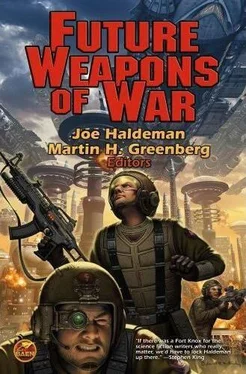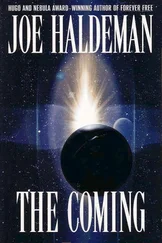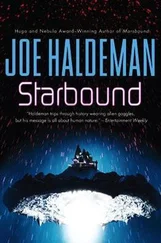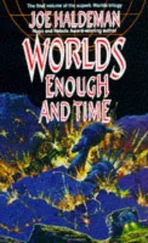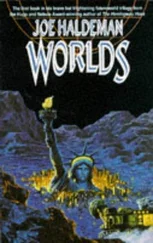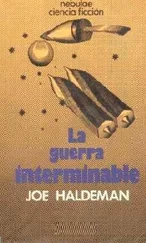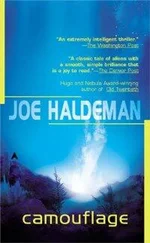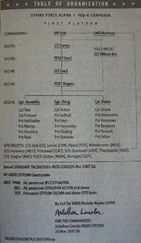Despite advances in physics that would have seemed godlike to ancient Humankind, the speed of light remained the ultimate barrier to communication. A signal sent outward from the Core still required two tenths of a galactic rotation to reach the Outer Rim.
The Caretakers didn’t think in terms of galactic years, of course. They tended to measure such relatively brief periods in terms of radioactive decay; Ygal0.2 was roughly the equivalent of two half-lives of plutonium-239. The concept of a fixed galactic year equal to 225 million years could apply only to the Dyson cloud of Sol and other systems 26,000 light-years out—the length of time it took stars at that distance to orbit the galactic center once.
Still, a tiny fraction of the extremely remote descendents of Humankind had slowly spread throughout the home galaxy. Almost a billion years after Humankind had first ventured from the surface of his world, some hundreds of millions lived on and within a number of artificial worlds and structures scattered along the fringe of the Galactic Core, and took part in many of the principal deliberations of the Conclave.
“What we need,” one of those descendents told the Group Mind, “is a weapon. A very, very powerful weapon.”
The being was not genus Homo —was not, in fact, even remotely organic. The majority of sentient beings throughout the Galaxy—those with a corporeal existence, at any rate—were machines: highly intelligent, long-lived, supremely rational, and capable of taking a very long view of things indeed. Outward form and the physics of reproduction were unimportant; what counted alone was Mind.
“What,” another machine mind inquired, “is a weapon?”
“A device,” the first mind replied. “A tool for applying energy in such a way as to stop or divert a threat. Check your oldest records. Within primitive organic systems, they are used to acquire other organic matter as food, or to acquire political advantage so that one system can impose its will upon another.”
“And how does that relate to the threat we face?”
The emotive equivalent of a shrug crossed the light-years. “Our metacivilization faces destruction when the Andromedan galaxy merges with ours some four point three five half-lives of Uranium-235 hence.”
“A very long time.”
“Not so long. Fewer than ten complete rotations of our Galaxy. And the longer we wait, the more energy we must employ to safely alter Andromeda’s vector. In considerably less time than that, a critical point will be reached, after which harmlessly diverting Andromeda will be impossible, and damage—perhaps catastrophic damage—to the metacivilization becomes inevitable.”
“I yet fail to see why this is of serious concern,” another member of the Conclave put in. Its particular civilization occupied the warm and salty seas beneath the ice crusts of a number of moons circling Jovian-type gas giants, a vantage point less than conducive to an outlook along astronomical scales. “As we understand it, no stars will be harmed by the interpenetration of the galaxies.”
“But the component stars of our metacivilization will be so completely scattered,” the descendent of Humankind replied, “that communication between the individual systems will become impossibly long. Worse, the collision of gas clouds will initiate a period of intense star formation. The newborn suns will be massive and short lived, leading to an epoch of supernovae that will flood ambient space in deadly radiation. Many of us can shield our home systems from the high-energy flux, even use it, but countless organic worlds would be rendered sterile.”
“Of more serious concern,” another Mind said, “is the limiting of available data. We predict that a metacivilization such as ours, in the absence of a viable interstellar data exchange, would inevitably collapse to Type K2.4L within what remains of the galactic cores. Individual star systems flung into the Void could maintain civilizations no higher than approximately K1.9J.”
For eons now, the scope and depth of Civilization had been measured by the amount of information it processed and stored. A primitive tribe wandering the surface of a world, with no written language, might process 10 bits of data, and be classified as Type A. Each tenfold increase in available data represented another step up the scale. The ancient world of Kardeshev, with all of its books and com puter hard drives storing something like 10 bits, would have been classified as a K0.7H. The metacivilization of the Caretakers, with access to the stored data of 10 worlds, was currently a Type K3.5Q.
The machine intelligence was pointing out that after the collision with Andromeda, any surviving metaculture would be able to draw upon the massed data of no more than 104worlds, and would therefore be limited to 1017bits—a Type L. Single worlds flung clear of the Galaxy, isolated andalone, would be able to handle no more than the data available to a solitary star system—its data processing capability forever limited to a paltry 1015bits.
The information stunned.
“And the vast and increasing gulf between the individual star systems,” the first machine mind continued, “would guarantee that a true metacivilization would never reform, that the highest communicative element would be a single star and its population of worlds and habitats. That is the challenge that faces us as Sentient Mind—to prevent the randomization of all we have created, and to ensure our future growth.”
The conversation was being carried out across the breadth of the Conclave’s environs about the Core, information traveling on the wings of laser, gravitic pulse, and gamma flux emulation. A statement by one member required ten thousand years to reach all of the others, and required a like period for a complete reply. Such was the snail’s pace of conversation across the interstellar Void.
For one and a third galactic years, then, as humans might have measured the span, the Conclave deliberated.
And consensus was reached.
In principle, at least, it should be possible to project an induced gravity field in such a way as to deflect M-31, either ripping it apart until it was too diffuse to gravitationally affect the home galaxy’s structure, or sending it—more or less intact—off on a different vector entirely, harmlessly into intergalactic space.
By manipulating the Zero Point Field, that subatomic realm of metareality where virtual particles and antiparticles foamed in and out of existence, gravity could be controlled on a scale large enough to redirect the orbits of entire suns. Indeed, the early stages of the Galactic Dyson sphere were already visibly manifest, as neatly ordered rings of stars circled the Core in precise arrays visible from as far out as the Rim. Ordering the stars and their attendant worlds in this way made vastly simpler the task of linking all of the worlds together into a communications web: one that already embraced fifty million worlds, and which one day would link them to all.
And if they could manipulate the paths of individual stars, it was only a matter of scaling up the engineering to manipulate the paths of four hundred billion stars at once.
In Ygal26.18, work on the Weapon began in earnest.
And the epochs passed.
* * * *
Ygal28.95
By the end of the twenty-eighth galactic year after Sol’s birth, and some 1.9 billion years after the far-off epoch of Selan and Valova, the two slow-spinning pinwheels of stars had closed the gap between them to something just less than half a million light-years—a mere five times the diameter of the Milky Way, and two and a half times huge Andromeda’s breadth. Even to organic eyes—and there yet were many of those even within a metacivilization composed largely of machines or of noncorporeal intelligences resident within the Galaxy’s communicative network—the Andromedan spiral now dominated the night skies of appropriately situated worlds, a vast oval of light spanning nearly thirty degrees, or sixty times the size of the long-vanished Moon in Earth’s ancient sky.
Читать дальше
